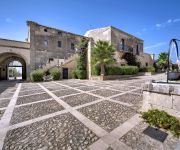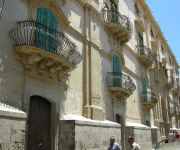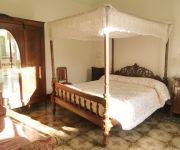Facts and Data
Webpages:
Official Unesco Page
Allakatalla: Turismo e Cultura in Val di Noto (only in Italian)
unesco.beniculturali.it
Officine Culturali, per le visite guidate al Monastero dei Benedettini di Catania
Soprintendenza beni culturali ed ambientali (only in Italian)
Comune di Noto
Basis Data:
Unesco World heritage since: 2002
Size of heritage: 113 ha
- Buffer zone: 306 ha
Coordinates:
Longitude: 15,069°
Latitude: 36,893°
Summary
The eight towns in south-eastern Sicily: Caltagirone, Militello Val di Catania, Catania, Modica, Noto, Palazzolo, Ragusa and Scicli, were all rebuilt after 1693 on or beside towns existing at the time of the earthquake which took place in that year. They represent a considerable collective undertaking, successfully carried out at a high level of architectural and artistic achievement. Keeping within the late Baroque style of the day, they also depict distinctive innovations in town planning and urban building.
Location on Map
Show bigger map on Openstreetmap
Introduction
The Late Baroque Towns of the Val di Noto, located in the provinces of Catania, Ragusa, and Syracuse in South-Eastern Sicily, Italy, are a UNESCO World Heritage site. This remarkable collection of towns showcases the architectural and urban planning achievements of the late Baroque period in the 17th and 18th centuries. The towns of Caltagirone, Militello in Val di Catania, Catania, Modica, Noto, Palazzolo Acreide, Ragusa, and Scicli collectively form this unique cultural landscape.Historical Significance
The Late Baroque Towns of the Val di Noto owe their existence to a devastating earthquake that struck the region in 1693. The earthquake destroyed numerous towns and cities, prompting a massive reconstruction effort. The reconstruction was carried out in the prevailing architectural style of the time, the late Baroque, which was characterized by extravagant ornamentation, grand facades, and intricate details.Architectural Marvels
Each town within the Val di Noto region boasts its own architectural marvels. In Noto, the Cathedral of San Nicolò stands as a testament to the grandeur of the period, with its imposing facade adorned with statues and intricate decorations. The Church of San Giorgio in Ragusa showcases the fusion of Baroque and Gothic styles, while the Church of San Giuseppe in Modica is renowned for its stunning staircase.Urban Planning
The late Baroque towns of the Val di Noto are not only remarkable for their individual buildings but also for their urban planning. The towns were meticulously designed with wide streets, spacious squares, and elegant palaces. The urban layout reflects the principles of the Baroque period, emphasizing symmetry, perspective, and harmony. The towns' urban planning also incorporates elements of Sicilian and Spanish architectural traditions, resulting in a unique blend of styles.Current State
Today, the Late Baroque Towns of the Val di Noto continue to captivate visitors with their architectural splendor and historical significance. The towns have been meticulously preserved and restored, ensuring that their original beauty remains intact. The UNESCO World Heritage designation has helped raise awareness about the importance of these towns and has encouraged ongoing conservation efforts. Tourists flock to the Val di Noto region to explore the narrow streets, admire the ornate facades, and experience the vibrant atmosphere of these towns. The annual Infiorata festival in Noto, where the streets are adorned with intricate flower carpets, is a particularly popular event. The Late Baroque Towns of the Val di Noto are not only a testament to the architectural achievements of the late Baroque period but also a reflection of the resilience and determination of the Sicilian people. The reconstruction following the earthquake of 1693 was a monumental task, and the resulting towns stand as a symbol of the region's ability to overcome adversity. In conclusion, the Late Baroque Towns of the Val di Noto in South-Eastern Sicily, Italy, are a UNESCO World Heritage site that showcases the architectural and urban planning brilliance of the late Baroque period. These towns, with their grand facades, intricate details, and harmonious urban layouts, continue to enchant visitors and serve as a reminder of the region's rich cultural heritage.Hotels and places to stay
Gagliardi Boutique Hotel
Villa Giulia
Porta Reale Hotel
La Dépendance
B & B Conte di Cavour
La Casa Fiorita
B&B Vinci
Albergo La Fontanella
B&B del Carmine
Nobilis
Videos from the area
Videos provided by Youtube are under the copyright of their owners.

















